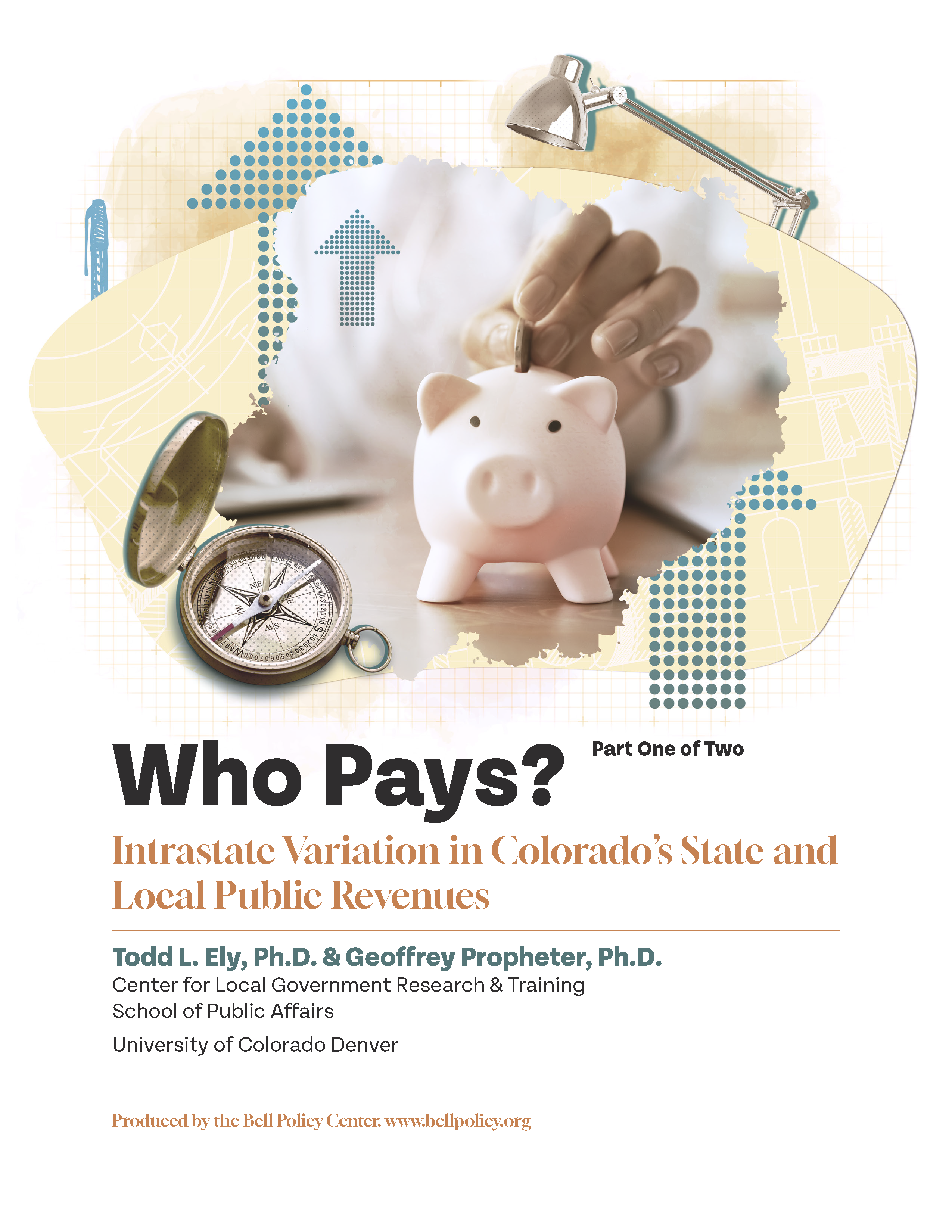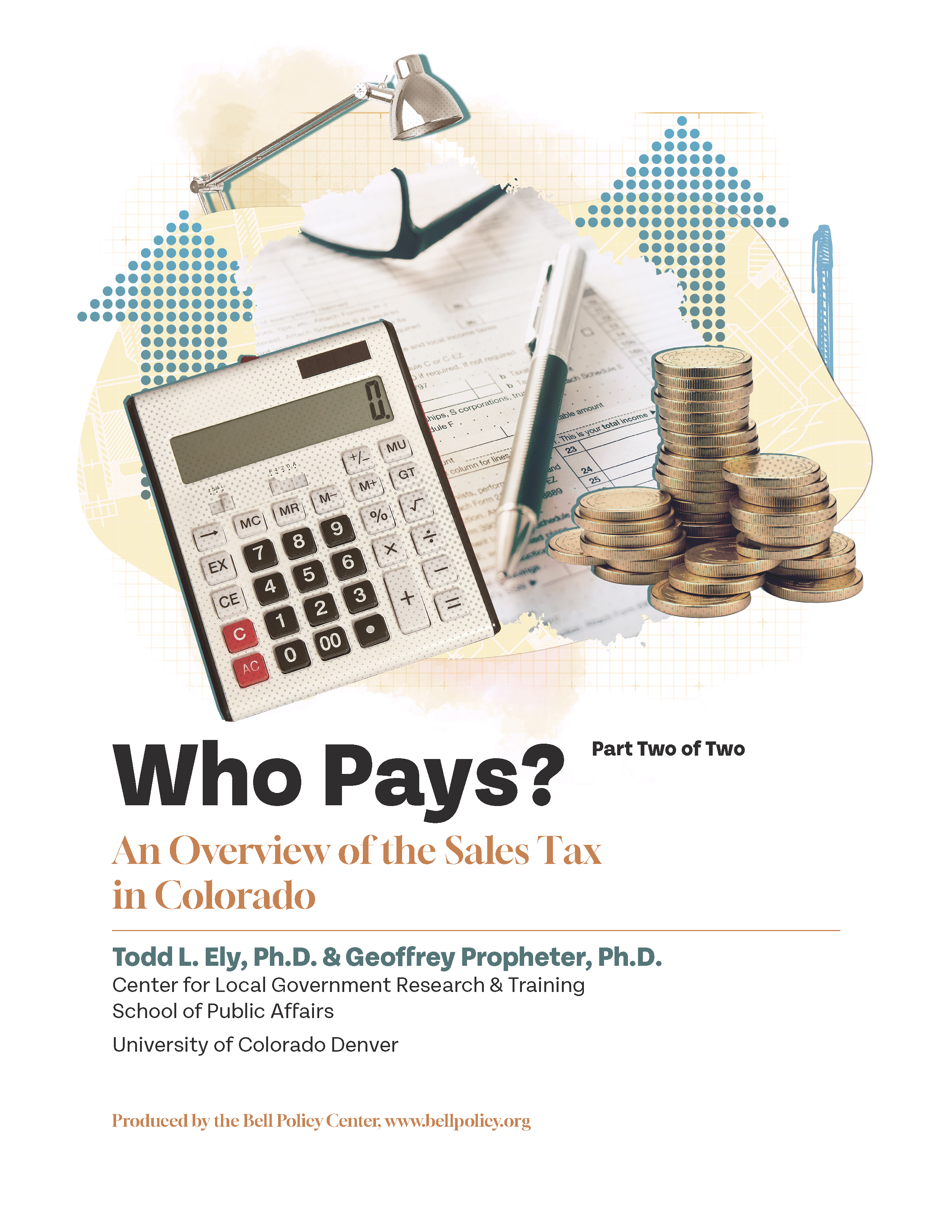Who Pays?
Who Pays?
A myriad of local governments in Colorado – and the uneven way in which the taxes they levy affect people in different income brackets – makes for stark taxing differences across Colorado. These two briefs by University of Colorado Denver Associate Professors Todd L. Ely, Ph.D. and Geoffrey Propheter, Ph.D, explore intrastate differences in taxes. Putting precise numbers to those variations, as the professors found, was surprisingly complex. It’s a landscape that is often unclear to even residents and policymakers.
Their research is intended to shine a light on taxes across Colorado communities by tallying taxes and examining how the structure of those levies affects people in different income brackets and geographies. In the aggregate, the property tax represents the most important local tax, although the dependence differs dramatically across the different types of local government (counties, cities, towns, school districts, and special districts).
Part 1: Who Pays?
Intrastate Variation in Colorado's State and Local Public Revenues
Part one highlights the complexity of Colorado’s public revenue systems and the challenges to capturing the distributional consequences.
Part 2: Who Pays?
An Overview of the Sales Tax in Colorado
Part two provides a preliminary look at differences in taxes and fees across communities in Colorado.
The reliance on sales taxes, which is often where local communities find themselves turning to pay for desired services, takes a bigger bite out of the paychecks of lower-income families. Such taxes are less progressive and worsen income inequality. As the Bell noted in this 2020 report, the decision to use sales taxes instead of, for instance income taxes, to fund public priorities has profound effects on taxing equity.
Yet, in a state where the Taxpayer Bill of Rights, or TABOR, has shaped fiscal policy for the last three decades, communities often are left with few options to generate funding to address resident needs. Understanding the makeup of local revenues and the effect that local tax levies have on different income groups will become more critical as time goes on.
“As Colorado voters continue to be called upon to consider proposals to alter the income, property, and sales taxes, and policymakers grapple with how to address an eroding sales tax base, rapidly rising property values, and optimal TABOR refund mechanisms, this research provides unique information and perspective on sub-state revenue portfolios for more informed decision making,” the professors wrote.
Key findings from the briefs include:
- Colorado depends less on property taxes and transfers, and more on general sales taxes than national counterparts. In fact, compared to state and local general revenues from other areas of the nation, Colorado local governments depend nearly three times more heavily on the general sales tax.
- Colorado’s state and local tax systems worsen income inequality. The lower your income, the higher your effective tax rate in Colorado, a measure that looks at the proportion of income that goes to taxes. That’s because many of Colorado’s taxes are set at a flat rate as opposed to a graduated rate that increases with income.
- While state government can look to income taxes for revenue, local governments depend far more heavily on property taxes and sales and use taxes.
- There are stark geographic differences when it comes to the degree of dependence on revenue streams. Property tax revenue averages 28 percent of total revenues received by local governments in Colorado. However, Clear Creek County gets 55 percent of its revenue from aggregated property taxes and Otero County gets only 12 percent.
- The same type of variation can be seen in aggregated sales and use taxes as a proportion of total revenues. Summit County gets 28 percent of its revenue from these sources, while Kiowa County gets just 1 percent. The average is 13 percent.
- When it comes to intergovernmental revenue, which are financial transfers from higher levels of government, Front Range and Mountain communities are less dependent on this source, while the Southern region of the state relies heavily upon it.
As communities increasingly step up to fund services that state government isn’t providing, understanding the complex constellation of local taxes and how they support communities – and impact their residents – becomes ever more important.
Ely and Propheter conclude that the makeup of revenue varies greatly by geography and income strata, and the complexity of Colorado’s public revenue systems makes it difficult to understand the distributional consequences of taxing decisions. Continued efforts to better understand who pays are necessary as lawmakers, policy makers, scholars and taxpayers grapple with tax policy and the changes that are necessary to continue to fund important services.


